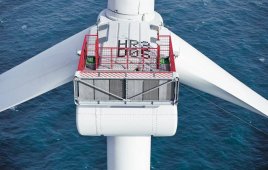Kieth Martin with Chadbourne Parke LLC, and a few others in a panel discussion shared ideas for such a negotiation.
As it becomes harder to find utilities willing to enter into long-term contracts to buy electricity, renewable energy developers have been signing power purchase agreements to sell electricity directly to large corporations. Several thousand megawatts of corporate PPAs are expected to be signed in 2016 in the US market. Some of the contracts are for physical delivery of electricity. Others are virtual PPAs that are swaps of fixed-for-floating payments around the electricity from a project.
Two corporate buyers of electricity and two renewable energy developers talked at an Infocast conference in late September in Washington about the main issues that must be addressed before such a contract can be signed. The room was standing-room only. The buyers are Anthony Davis, project manager for renewable energy, global environmental compliance sustainability group, General Motors, and Renée Morin, living progress-stakeholder relations, Hewlett Packard Enterprise. The sellers are Ted Romaine, director of origination for Invenergy, and Jacob Susman, vice president and head of origination for EDF Renewable Energy. The moderator is Keith Martinwith Chadbourne in Washington.
- MARTIN: We will do two things this afternoon. First, there are a number of general questions listed on the program and, in case you have come to hear those answered, we will answer them first. Second, we want to show you what happens when the two sides sit down to negotiate a corporate PPA. We have two buyers and two sellers. We want to talk through what issues need to be resolved to give you a feel for how they might settle.
Starting with the general questions, Jake Susman, are there enough renewable energy projects to meet corporate demand in 2016?
- SUSMAN: In a word, no. Development pipelines have thinned. Many developers, especially in wind, are in the process of rebuilding them. If you look under the hood of a lot of projects today, they are still somewhat early stage.
- MARTIN: Developers thought 2016 would be the end of the market before Congress voted late last year to extend renewable energy tax credits. Ted Romaine, what do you think about 2017 and beyond? Will there be enough projects to serve the demand?
- ROMAINE: I think there will be. I think Jake is right. We are rebuilding pipelines. We heard from some panelists this morning that it is really a buyer’s market. Looking forward to 2017 and 2018, more projects will be nearing completion.
You have the production tax credit for wind starting to phase out next year. That will affect what people do in the short term. There will be greater interest in wind farms that qualify for full tax credits. There is a little longer runway for solar. Developers like EDF and Invenergy will work very hard to bring up our pipelines and make sure we have enough capacity to satisfy the market.
- MARTIN: So Jake Susman, Ted Romaine said it is still a buyer’s market this year, even though development pipelines have thinned. How can that be?
- SUSMAN: It is a question of timing. We had a lot of end-of-year demand last year when people thought we could be nearing the end of tax credits for wind and solar. Wind got only a four-year extension, but there is favorable IRS guidance around that extension.
That basically caused people to pause to think about how they want to do their procurement over the next couple years. We are feeling the demand ramp back up in real time, but it will take some time for demand to ramp back up to match supply. Call it 12 months. I think you will then start to see people realize their pipelines are a little thin.
- MARTIN: Here is another general question for our two sellers. There were predictions as recently as June that the corporate PPA market would reach 4,000 megawatts this year. From where you sit, does that seem right?
Read the rest: https://goo.gl/bCXWro
Filed Under: Financing





